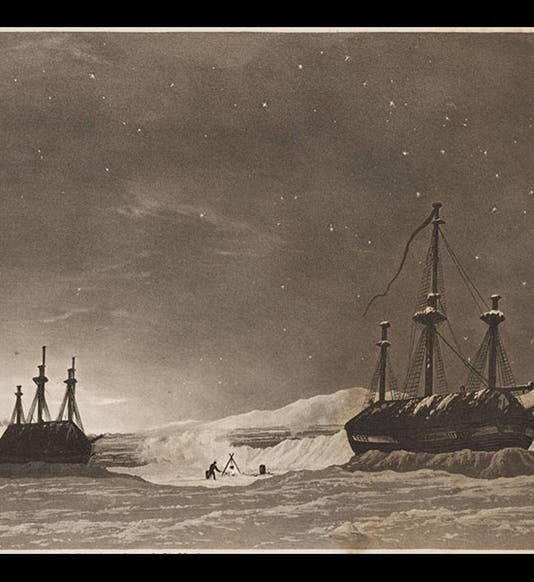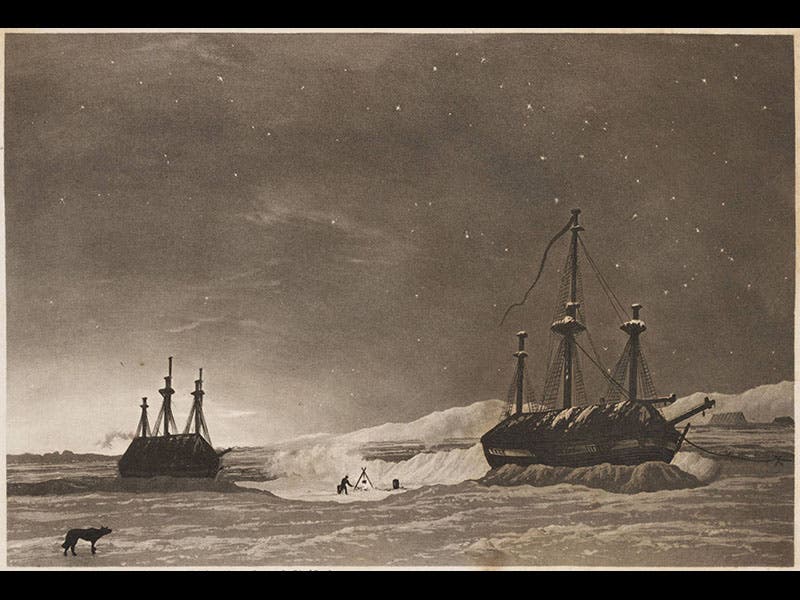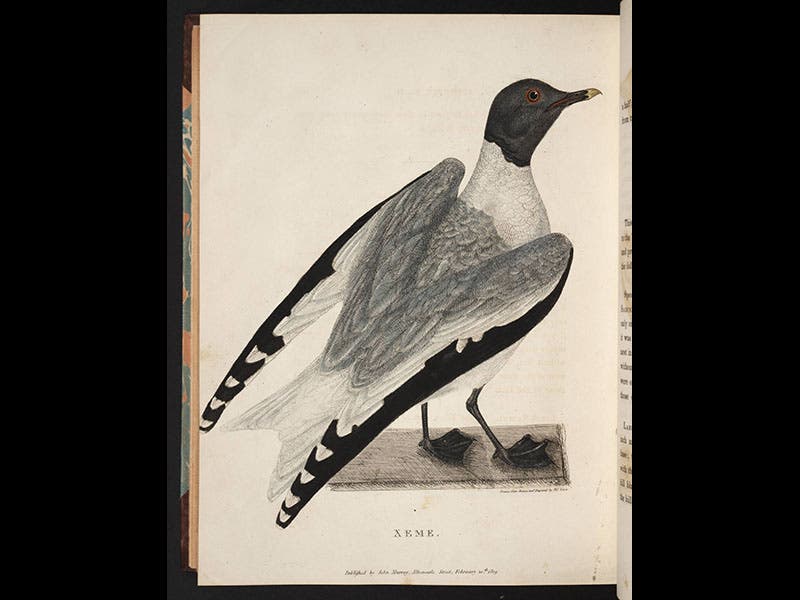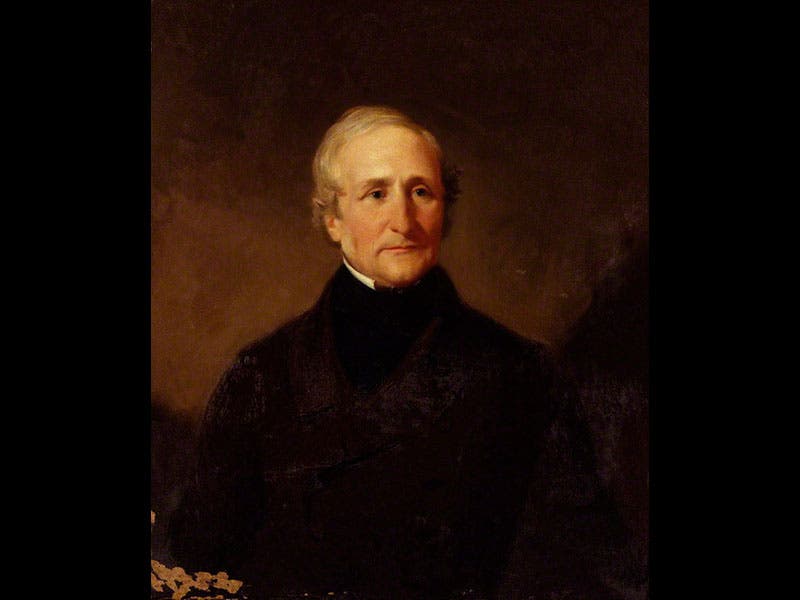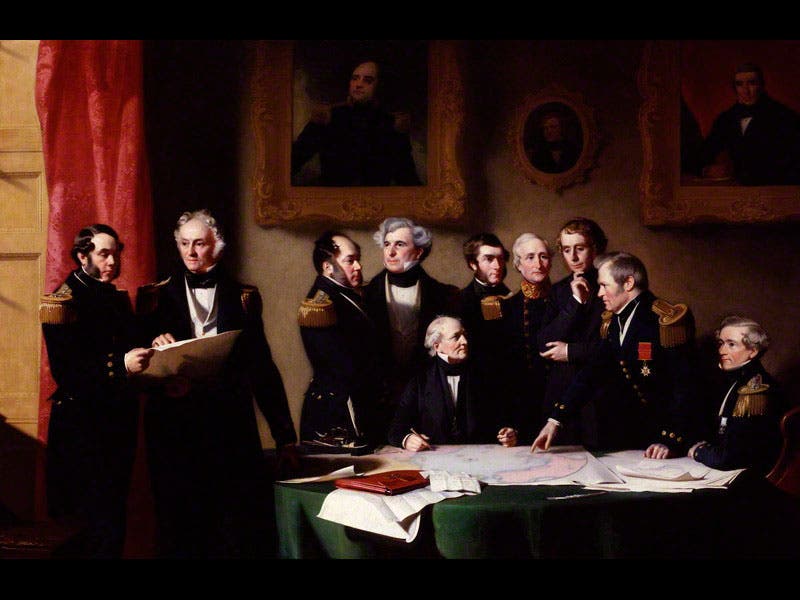Scientist of the Day - Edward Sabine
Edward Sabine, a physicist and officer in Great Britain's Royal Artillery, was born Oct. 14, 1788. Sabine was a pioneer in the study of geomagnetism in the early nineteenth century, and he pushed for expeditions to venture into the Arctic north and discover the earth's North magnetic pole. He was the onboard scientist for the very first voyage that sought a Northwest Passage, that of John Ross in 1818 (see the Scientist of the Day, June 24, 2015), and Sabine also joined the voyage of the Hecla and Griper, commanded by Edward Parry, that got almost two-thirds of the way across the Canadian Archipelago in 1819 (first image). On the Ross voyage, a new species of gull was discovered and named Sabine’s gull (second image).
In the 1830's, Sabine made a strong plea to the Royal Society and the Admiralty for a "magnetic crusade," a world-wide series of voyages and expeditions for laying bare the magnetic structure of the earth and for establishing the locations of the North and South magnetic poles. He proposed in particular a voyage to Antarctica, which was realized in 1839-43, with John Ross's nephew, James Clark Ross (who had discovered the North magnetic pole in 1831), in command of HMS Erebus and Terror. The entire enterprise was a grand success, except that they could not reach the South magnetic pole, since at the time it was located inaccessibly inland. The Erebus and Terror were the same two ships that would be sent out again in 1845, under the command of Sir John Franklin, continuing the search for a Northwest passage, and this time the Erebus and Terror would not return, nor would any of Franklin's officers and crew.
It was while the search for Franklin was underway that Stephen Pearce painted a very famous group portrait, known as the Arctic Council (1851). It portrays a fictitious meeting of a fictitious group--there was no Arctic Council--but it gave Pearce an excuse to collect together in one painting the most important British officers and explorers who had been attempting first to tame the Arctic, and then to find Franklin. To construct the painting, Pearce first painted individual portraits of each of his chosen figures, from live sittings. Then he used those paintings to create his ideal group portrait. The portrait of Sabine, in the National Portrait Gallery, shows a very strong and determined man, even though he was 62 years old at the time (third image). Once you have seen the individual portrait, it is easy to pick out Sabine in the Arctic Council (fourth image); he is the fourth man from the right, in the rear. If he sticks out a little, he was, after all, the only Army man in the composition, wallowing in a sea of Admirals.
Dr. William B. Ashworth, Jr., Consultant for the History of Science, Linda Hall Library and Associate Professor, Department of History, University of Missouri-Kansas City. Comments or corrections are welcome; please direct to ashworthw@umkc.edu.

